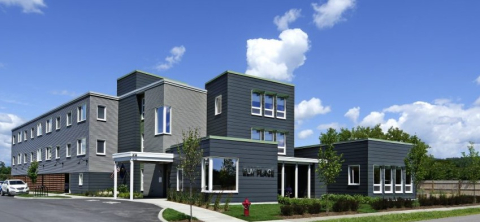Earlier this year, the U.S. Department of Housing and Urban Development (HUD) released its latest report on the characteristics of tenants living in apartments funded by federal housing tax credits as of 2017. The data reveals that Vermont renters living in tax credit housing are older and more racially diverse than Vermont households overall. The report also suggests that Vermont’s subsidized apartments tend to be more affordable than those in other states.

The federal Low Income Housing Tax Credit Program (LIHTC) is the largest single source of funding for affordable housing, having contributed to the construction or rehabilitation of 6,698 apartments in Vermont since the program began in 1986. In Vermont, housing tax credits are awarded by the Vermont Housing Finance Agency (VHFA) to developers, who then sell the credits to investors to fund construction. The LIHTC program has been linked to a variety of benefits for tenants, including better health outcomes and increased educational attainment and incomes among adults who lived in LIHTC housing as children.
HUD’s report finds that LIHTC tenants in Vermont are more racially diverse than the population as a whole with 14% of tenant households headed by someone who is non-white alone, compared to 7% of Vermont renter households and 4% of all Vermont households. Vermont’s LIHTC housing also serves a large proportion of older tenants. 43% of households are headed by someone aged 62 or older, compared to approximately 23% of all Vermont renter households. The share of older households served is significantly higher than many other states. Nationally, 31% of LIHTC apartments are occupied by senior-led households.
The LIHTC program was originally designed to provide apartments affordable to lower-middle incomes households earning 60% of the area median income, which is equivalent to $37,900 for a two-person household in Vermont. However, in practice LIHTC housing serves many much lower income households, often layering other state and federal funding sources to make rents more affordable. HUD reports the 44% of LIHTC tenant households in Vermont earn just $15,000 per year or less.
The federal standard of affordability is to spend no more than one third of household income towards housing costs. However, 38% of LIHTC tenants nationwide are cost-burdened, spending too much of their income on rent. Meanwhile, 26% of LIHTC renters in Vermont are cost-burdened, compared to 50% of all Vermont renters. Although Vermont LIHTC renters fare much better than either their counterparts in other states or Vermont renters overall, more funding for development and rental assistance is needed to keep rents within 30% of household income.
Pictured: Elm Place in Milton. The apartments were built through the Low Income Housing Tax Credit Program. Photo courtesy of Cathedral Square

